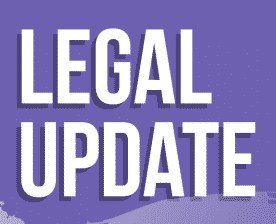On December 22, 2017, President Trump signed into law the Tax Cuts and Jobs Act—the most substantial reform of the U.S. tax code in over 30 years. This new law, which went into effect on January 1, carries significant changes to both individual and business taxation.
As taxpayers across the country scramble to understand the law’s implications and plan for the months ahead, businesses should consider how it will impact them from a human resources perspective. Of the numerous provisions in the Tax Cuts and Jobs Act, here are a few that will significantly affect employers and HR professionals:

Tax Reform 2018 What Employers Need to Know
Changes to Payroll Tax Withholding
The Tax Cuts and Jobs Act made sweeping changes to individual income tax rates and brackets, so employers must recalibrate their payroll systems in order to accurately reflect the new withholding amounts. Unfortunately, employers do not have much time to do so—the updated payroll tax withholding tables must be implemented no later than February 15, 2018. These tables, which provide the specific amounts that employers must withhold depending on the worker’s income, marital status, and payroll frequency, may be found in the recently issued IRS Notice 1036. (https://www.irs.gov/pub/irs-pdf/n1036.pdf)
The IRS has stated that it will take additional steps to help both employers and employees determine proper withholding amounts. For instance, an updated withholding tax calculator is expected to be released at www.irs.gov by late February. In addition, the IRS is in the process of revising Form W-4 and is planning educational efforts to help employees ensure that the correct amount of taxes is taken out of their pay.
Short-Term Federal Tax Credit for Paid Family and Medical Leave
The new tax law includes many provisions that will help businesses reduce their tax burdens. One such provision is a federal tax credit of up to 25 percent of the wages paid to employees who are taking leave under the Family and Medical Leave Act (FMLA). Currently, this credit will only be available for tax years 2018 and 2019, but there is a chance that it could be renewed in the future.
There are several requirements that must be satisfied in order for employers to reap the benefits of this tax credit:
-
- Employers must provide at least two weeks of leave, during which time they must pay qualifying employees no less than 50 percent of their regular wages.
- The minimum amount of the credit is 12.5 percent of the cost of each hour of paid leave, if the employer pays half of the worker’s regular earnings. This amount increases incrementally up to 25 percent if all of the regular earnings are paid.
- Employers may only claim the credit for wages paid to workers who have been employed with the organization for at least a year and who earned $72,000 or less in 2017.
- Part-time employees who have worked for the organization for at least a year must be offered paid leave on a prorated basis.
This new tax credit represents a financial boon to many employers and employees alike. Employers that want to seize the credit should review their current leave policies and ensure that they comply with the law’s requirements. For example, they should have written policies granting employees at least two weeks of paid family and medical leave at a minimum of half their normal wages.
Elimination of Deductions for Employer-Provided Fringe Benefits
While offering businesses new ways to save on taxes, the Tax Cuts and Jobs Act also eliminates certain incentives that had previously been popular among employers. Specifically, the law ends tax deductions for certain employer-provided fringe benefits, like moving, parking, transit, and bicycling reimbursements. For example:
-
- In the past, employers could deduct up to $255 per month of amounts they contributed for each employee’s transportation expenses, as well as $255 per employee per month for parking expenses. The Tax Cuts and Jobs Act eliminates the employer deduction for providing transportation and parking benefits, but employees can still use pretax dollars to pay these expenses on their own.
- The law also removes the employer deduction for reimbursements of up to $20 per employee per month for biking expenses. In addition, employees must now include such reimbursements in their taxable income.
- Through 2025, the new law disallows the employer deduction, as well as the exclusion from an employee’s taxable income, for job-related moving expenses paid by the employer.
- Employers may no longer deduct the costs of having an onsite gym, but employees may continue to exclude this benefit from their taxable income.
Given the new tax treatment of these benefits, employers will have to assess whether the advantages of providing them outweigh their costs and administrative burdens.
While the Tax Cuts and Jobs Act has ushered in several important changes for employers and HR professionals, other tax-related issues will remain the same. For example, organizations with 50 or more full-time employees are still subject to the employer mandate to provide health insurance coverage under the Affordable Care Act (ACA)—even though the tax law will eliminate the penalty on individuals who do not have coverage beginning in 2019. However, because the ACA’s individual and employer mandates are closely intertwined, many experts believe that the healthcare law will begin to unravel and the employer mandate will be struck down in the future. In the meantime, applicable large employers must continue to comply with the ACA’s employer mandate and reporting requirements.
Wondering how the Tax Cuts and Jobs Act may affect your organization? The HR professionals at Creative Business Resources stay up to date on the newest laws and can help you navigate the relevant changes. Through our Payroll Services, we will ensure that your organization is compliant with the new withholding requirements for 2018. Call CBR today at (602) 200-8500 or contact us online to get in touch with one of our HR experts!
(Sources: www.cpapracticeadvisor.com, www.shrm.org, www.shrm.org, www.shrm.org)































Leave A Comment
You must be logged in to post a comment.